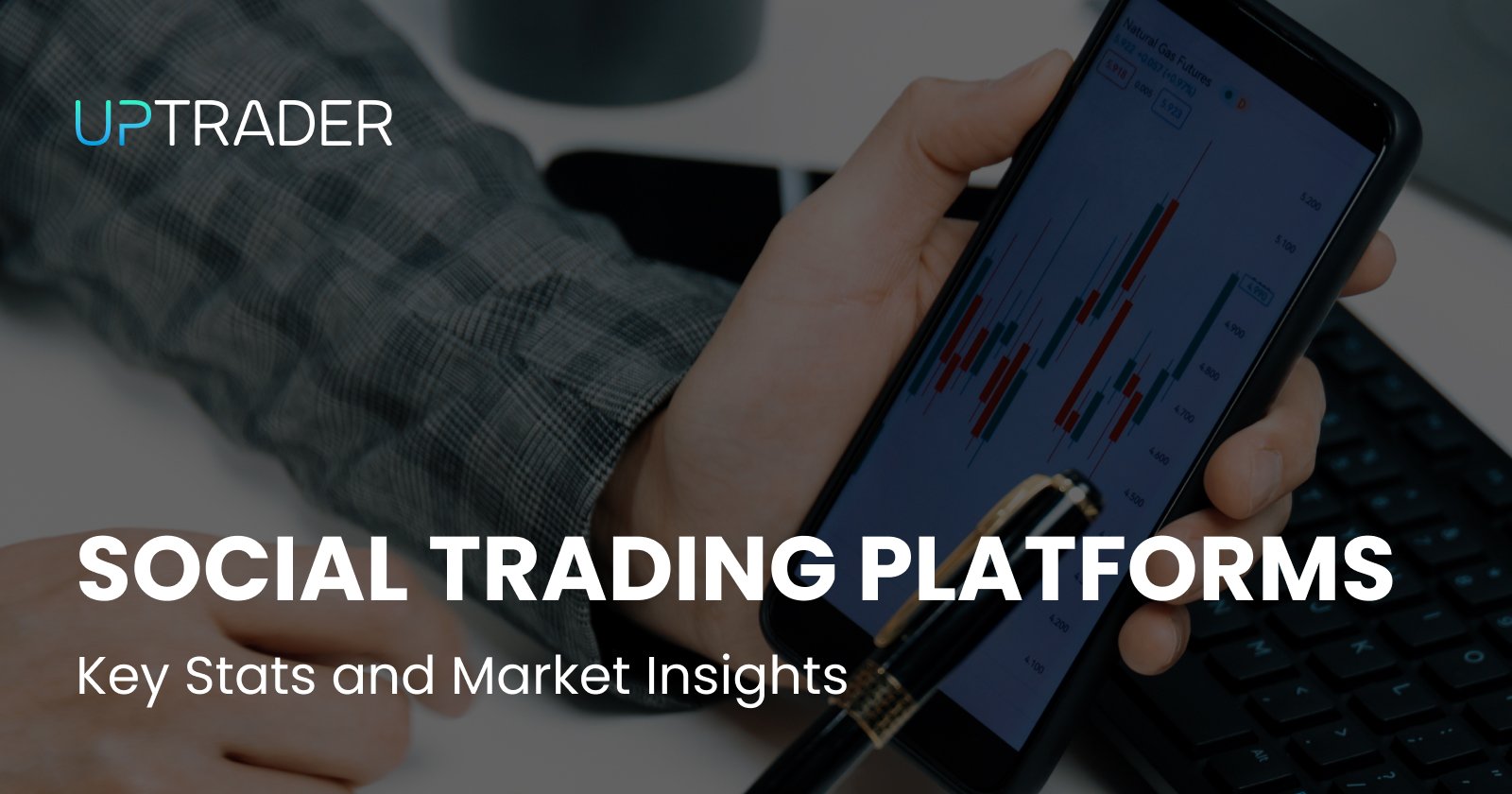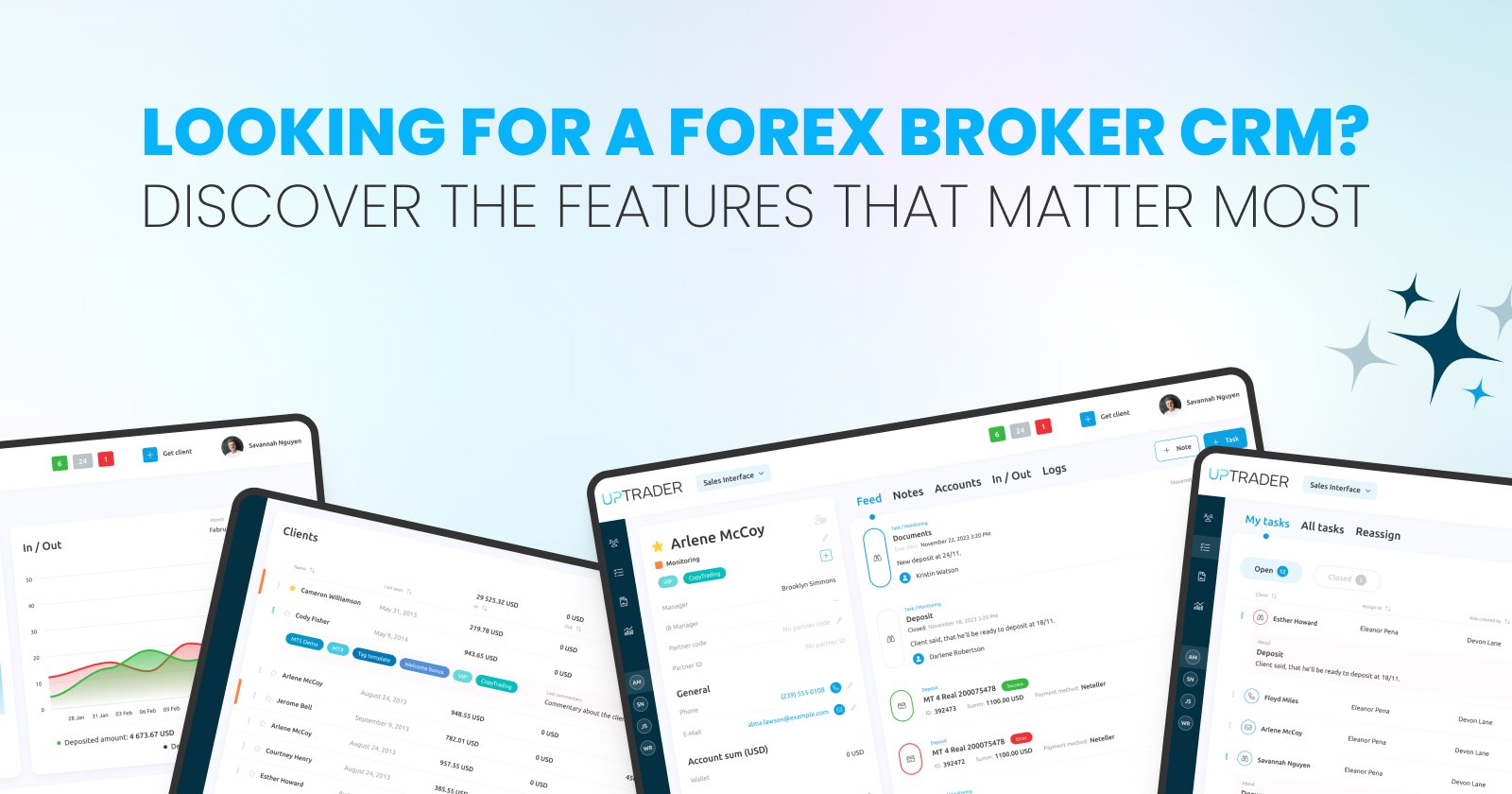Social Trading Platforms: Key Stats and Market Insights

Share this publication:
Ideal for all classes of investors, be it neophytes or experts, social trading which is executed through an app or a website enables users to see, trail, and copy other investors. This type of trading is quite different from the old and traditional methods of trading, and is only the beginning of a revolution in the financial technology market. In this article, we explore social trading platforms and assessment of its key players. Also, we will analyze and enumerate essential social trading statistics, key issuer trends, and predictive trends.
Social Trading Platforms Key Data
1. Global Market Size & Growth Forecasts
As of 2024, the global social trading platform market is valued at approximately USD 2.43 billion, according to The Business Research Company. It's projected to reach USD 2.62 billion in 2025, indicating a year-on-year growth rate of nearly 7.9%. Broader estimates, including services that blend social with algorithmic or retail trading, suggest a market closer to USD 3.2 billion, growing to USD 6.95 billion by 2033, with a compound annual growth rate (CAGR) of 9%. You can learn about it here.
The numbers demonstrate the quicker pace in resolution of social trading compared to that of traditional online trading, and though online trading is still in its infancy, it presents an opportunity for major growth in the upcoming decade.
2. Why People Use Social Trading
For most users, especially beginners, social trading offers two major appeals:
- Learning by observing: Rather than diving into charts, users can learn strategies by watching skilled traders in action.
- Low entry barrier: Users can begin trading by simply mirroring the positions of top performers, without the steep learning curve.
In a recent 2023 survey by BrokerChooser, 68% of Gen-Z investors reported a preference for copy trading in the developed regions as compared to traditional online brokers.
The trend signifies certainty bias - heavily promoted by other users reduces the perceived unpredictability of the market as a whole. In moments of elevated market undisclosed volatility, payment options such as copy trading assure volatility- fear is restored. Temporarily provided relief often leads to confidence that is the result of reckless or windfall trading.
3. Platform Types, Devices, and End Users
In terms of access, mobile platforms now account for over 70% of social trading activity worldwide, while web-based solutions continue to dominate the institutional segment, according to a report by Verified Market Reports.
Retail traders, often younger and more digitally engaged, represent the bulk of social trading users — making up 79% of the market value as of 2024, And in 2025 this number might grow even more.
4. Leading Platforms in 2025
Here are some of the most prominent players in the space today:
UpTrader
UpTrader is gaining traction, especially among brokers targeting emerging markets. The company provides a fully customizable social trading module, allowing brokers to offer copy trading under their brand. UpTrader’s system includes:
- Real-time trader ranking and analytics
- Performance-based follower fees
- Customizable dashboards for fund managers
- Broker-level control of commissions and limits
Because UpTrader integrates social trading directly into the broker’s existing infrastructure, it’s particularly attractive to firms operating in the MENA, Southeast Asia, and Eastern Europe regions.
If you want to try implementing UpTrader into your brokerage, you can talk to a consultant on our site today.
eToro
With over 38 million users and USD 931 million in revenue (2024), eToro is the most recognized brand in the social trading ecosystem. Its CopyTrader and Smart Portfolio features are widely used, and it now operates in over 100 countries.
ZuluTrade
ZuluTrade focuses primarily on forex and crypto, supporting integrations with MT4 and MT5 platforms. Though exact numbers are outdated, the company reportedly facilitated over USD 800 billion in trading volume.
Other Competitors
NAGA, Myfxbook Autotrade, Collective2, Darwinex, Tickmill, FP Markets, and AvaTrade also offer strong alternatives in various niches like equities, crypto, or algorithmic trading.
5. Regional Market Trends
The social trading market shows distinct regional patterns:
- North America led the market in 2023–2024 with around 30–40 % of revenue share, driven by high retail participation, strong infrastructure, and permissive regulation
- Europe followed with approximately a 30 % share in 2023.
- Asia–Pacific contributed roughly 20 %, but was the fastest-growing region in 2023 and into the forecast period, with projected CAGRs of 18 % or higher, especially in India and China.
- Latin America and the Middle East & Africa each held about 5 % share, though both are expected to grow steadily.
You can learn about these figures in depth here.
6. Technology Drivers
Several innovations are enhancing the social trading experience:
- AI-Powered Recommendations: Some platforms offer trade suggestions based on machine-learning models trained on historical data.
- Gamification: Leaderboards, trader ratings, and rewards are used to boost engagement.
- Blockchain Verification: Crypto-based platforms like Covesting use blockchain to offer auditable performance records for copy traders.
Mobile-first infrastructure and cloud scalability have also enabled newer platforms to compete effectively with legacy brokers.
7. Risk Considerations
While social trading democratizes investing, it also introduces risks:
- Over-Reliance on Star Traders: A sudden drawdown by a top trader can impact thousands of followers.
- Lack of Context: Copying trades without understanding the strategy can lead to bad outcomes, especially in volatile markets.
- Data Privacy: Social features often require sharing of trading performance or personal metrics — raising potential security concerns.
8. The Role of Brokers and Platforms like UpTrader
One of the least discussed — but most important — developments is how brokers are integrating social trading as a retention and growth strategy.
Firms using UpTrader and similar modular systems can:
- Keep users within their ecosystem, preventing client attrition to larger platforms like eToro or Binance.
- Incentivize high-performing traders with performance-based commissions and exposure.
- Launch branded apps with in-built copy trading and analytics.
This B2B-driven model means social trading isn’t just about user acquisition; it’s also becoming a core broker retention tool.
9. The Emerging Markets Effect
What’s particularly striking is how social trading is penetrating frontier and emerging markets:
- Nigeria, Pakistan, and Egypt are seeing a surge in social broker accounts, thanks to the rise in mobile usage and young investor populations.
- Latin America, especially Brazil and Colombia, is becoming a fast-adoption zone for crypto-social platforms.
- Southeast Asia is seeing copy trading bundled with educational services, catering to first-time investors.
For these markets, platforms that offer multi-language interfaces, low trade minimums, and local deposit methods (which UpTrader supports) are outperforming global players who overlook regional needs.
10. What to Watch in 2025 and Beyond
DeFi Integration
Some platforms are experimenting with decentralized social trading protocols where smart contracts automatically copy trades across wallets. This reduces the platform’s role, shifting control back to users.
Regulation
As copy trading becomes mainstream, more countries are likely to introduce licensing requirements for “signal providers” and mandatory disclaimers for followers.
API-First Platforms
New platforms like Trality and QuantConnect are also starting to blend algorithmic bot trading with social sharing features.
Final Thoughts
Social trading is no longer a niche. With projected global revenue reaching USD 6–7 billion by 2033, it has become a foundational layer of the digital trading stack. Its core strength lies in accessibility and community, especially for investors who want more than just anonymous market orders.
Platforms like eToro, ZuluTrade, and UpTrader are playing pivotal roles in shaping this ecosystem. Whether you're a broker, trader, or investor, understanding the social trading landscape is no longer optional — it's essential.
Looking to integrate social trading into your own brokerage or fintech project?
UpTrader’s CRM tools can help you build, manage, and scale your platform with features designed for community-driven trading.







